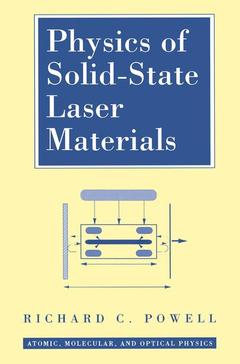Physics of Solid-State Laser Materials, Softcover reprint of the original 1st ed. 1998 Atomic, Molecular and Optical Physics Series, Vol. 1
Auteur : Powell Richard C.

The development of new and better solid-state lasers with specific operating characteristics is currently one of the most important areas of scientific research.
This professional reference presents the fundamental physics of solid-state lasers, including the basis of laser action and the optical and electronic properties of laser materials.
Powell is director of the Optical Science Center at the University of Arizona, one of the worlds preeminent centers of optical research.
Level of presentation makes it useful to the non-expert, e.g., for electrical engineers.
Many tables and illustrations make it very useful as a reference.
Date de parution : 10-2012
Ouvrage de 423 p.
15.5x23.5 cm
Disponible chez l'éditeur (délai d'approvisionnement : 15 jours).
Prix indicatif 52,74 €
Ajouter au panier


